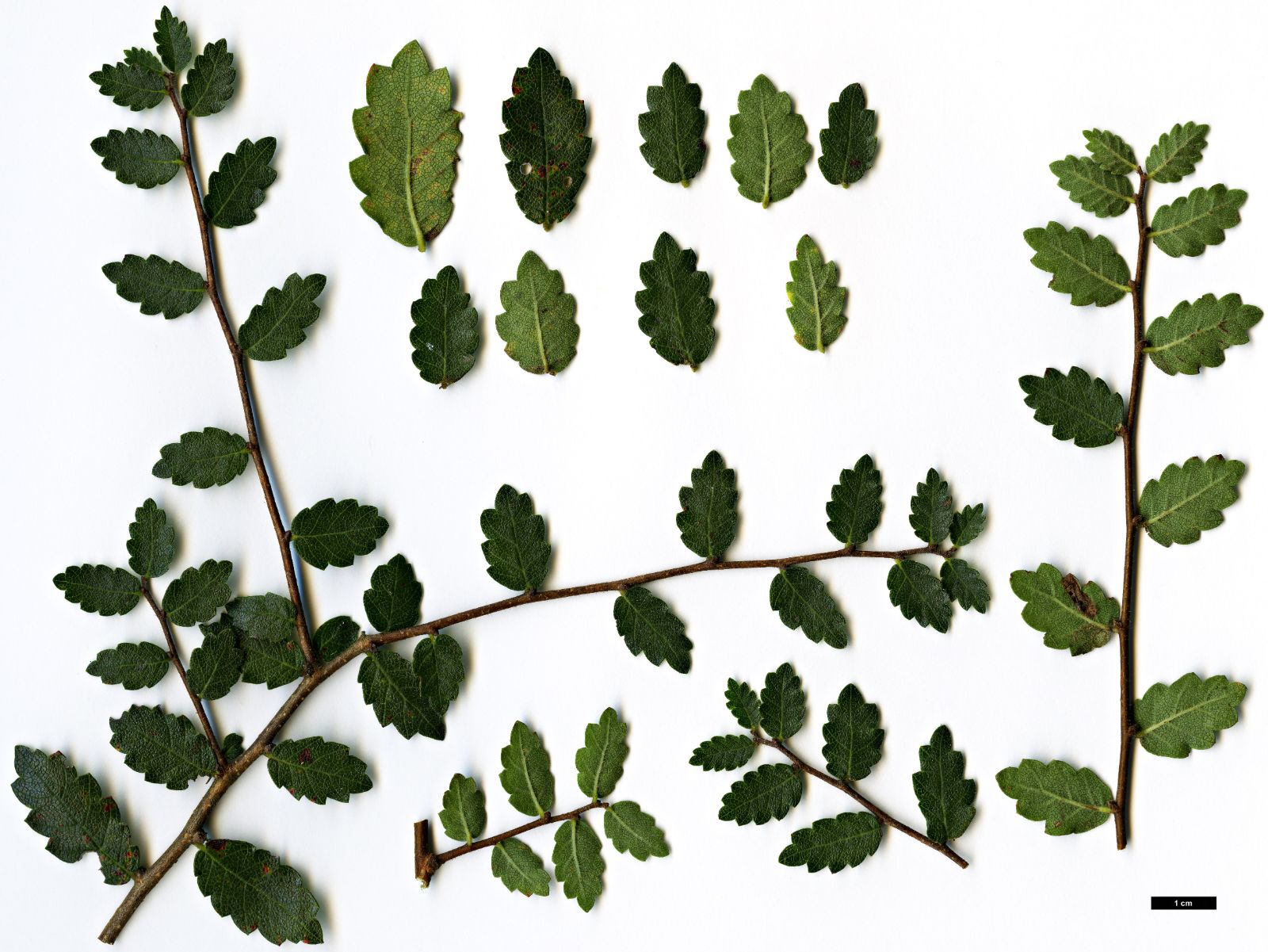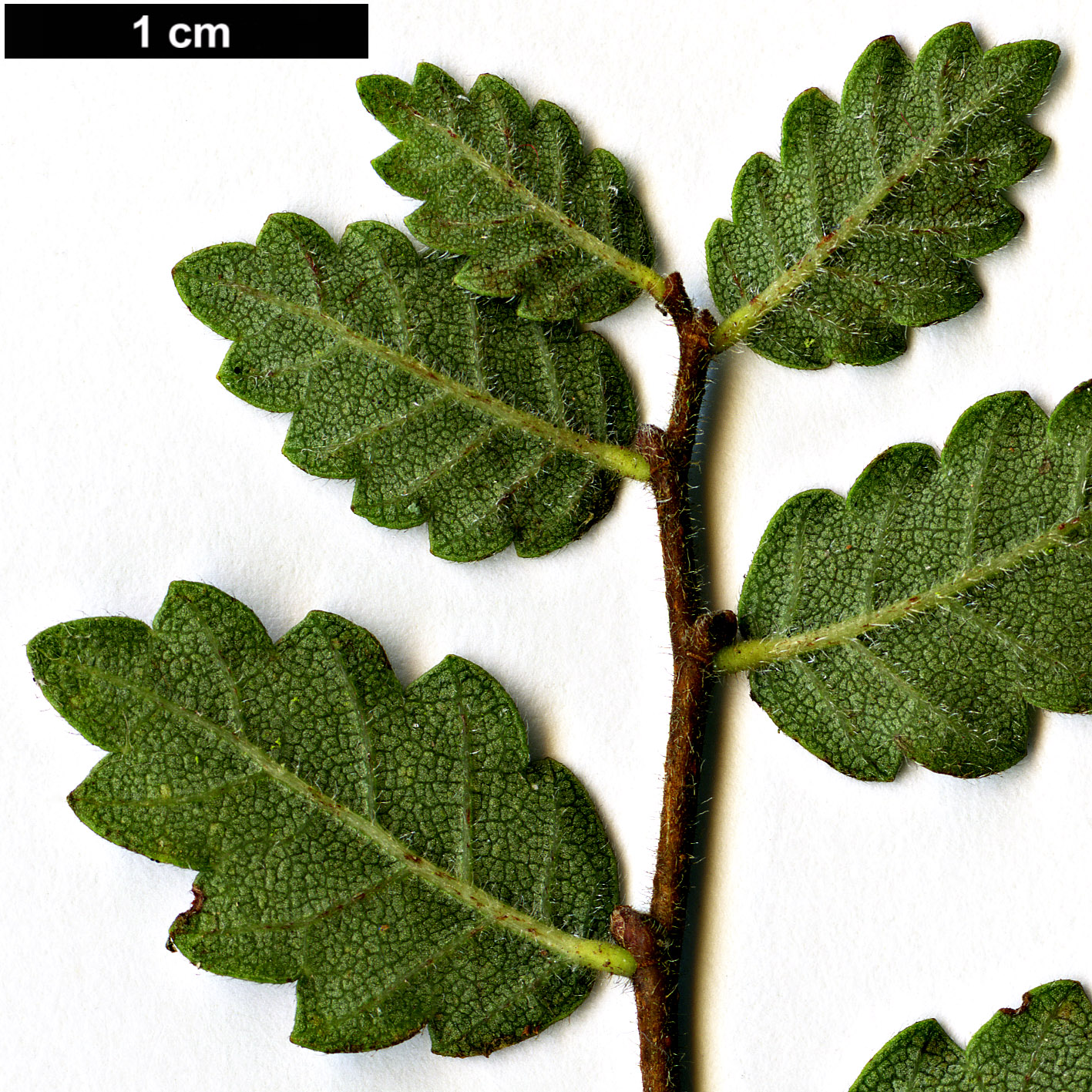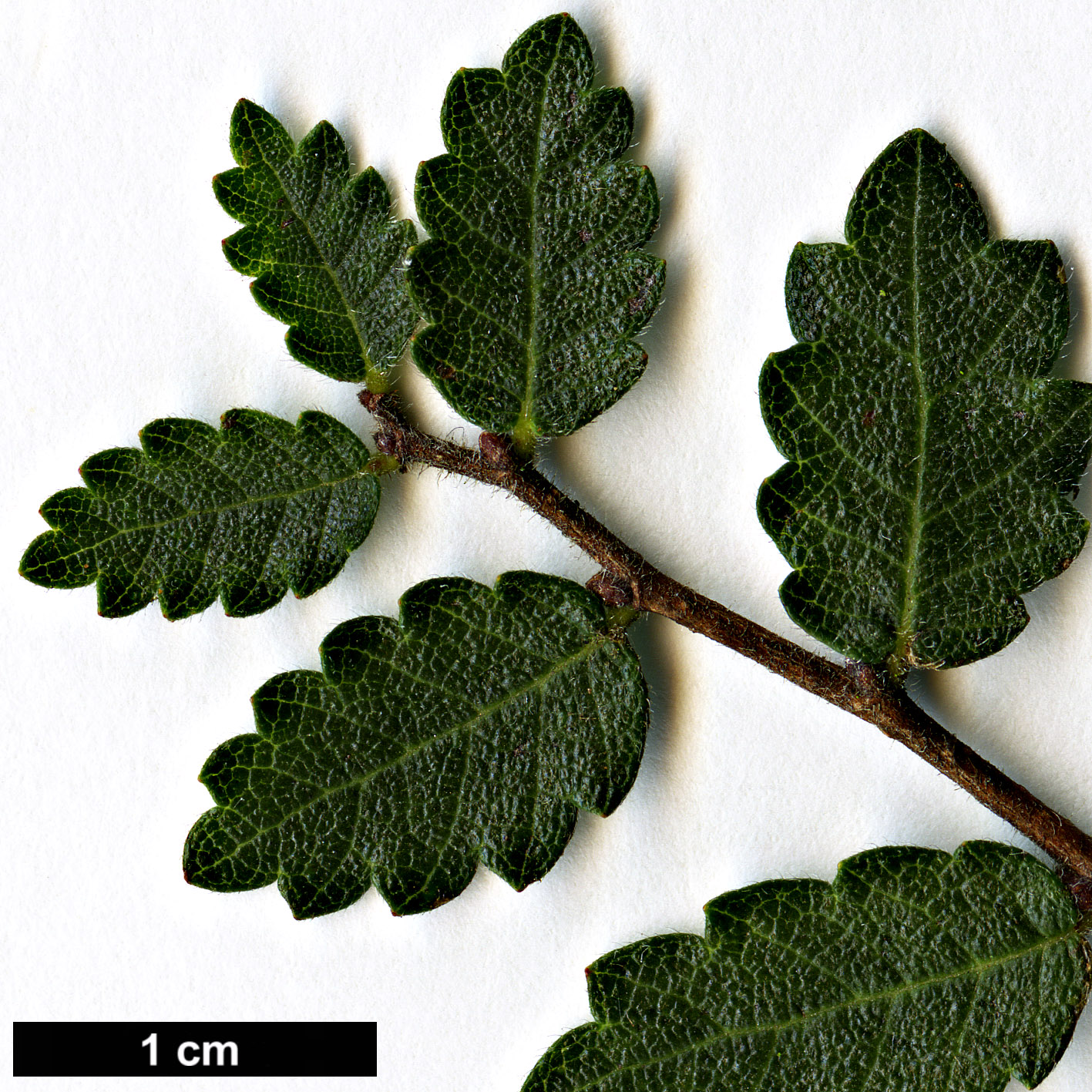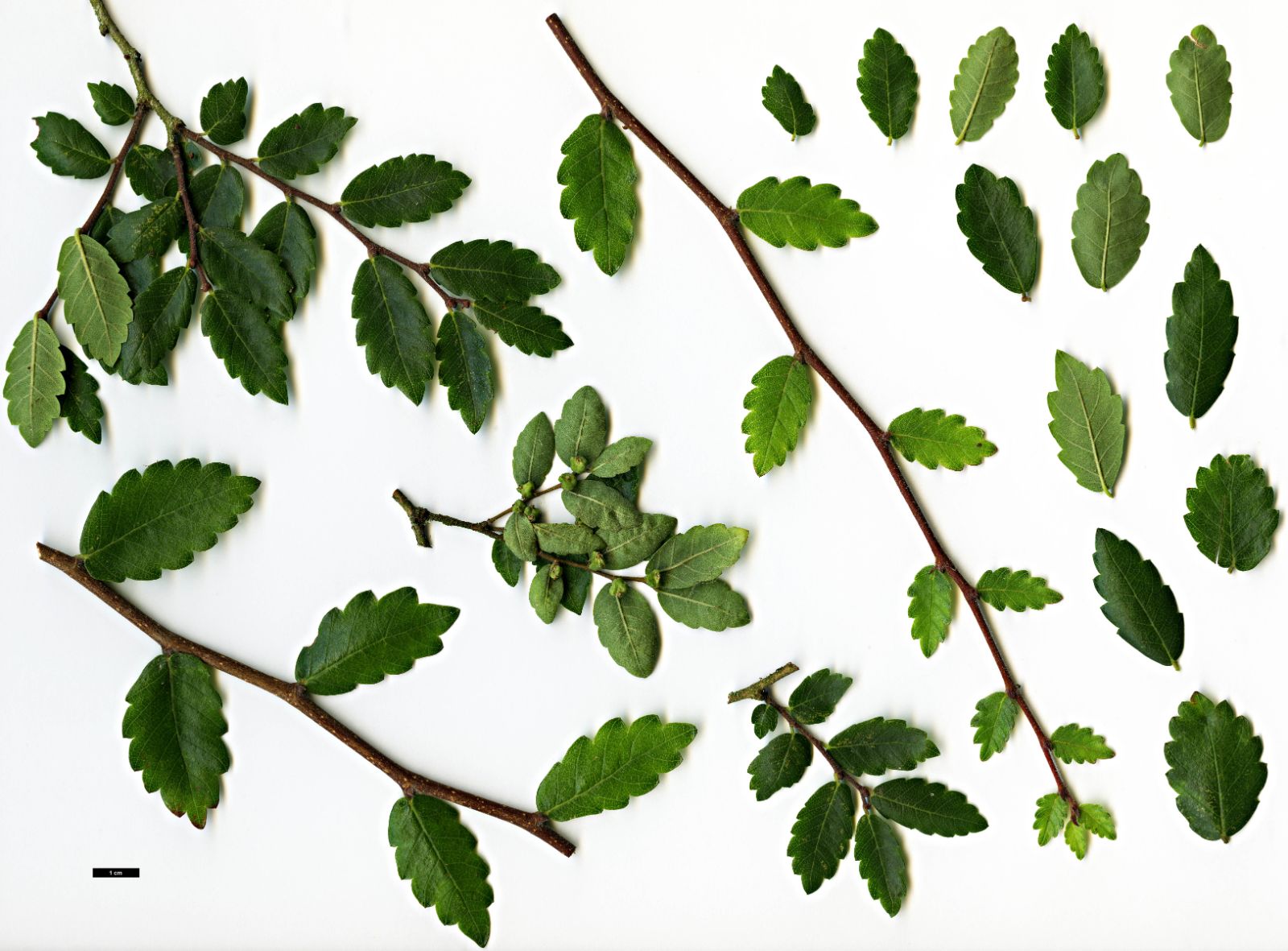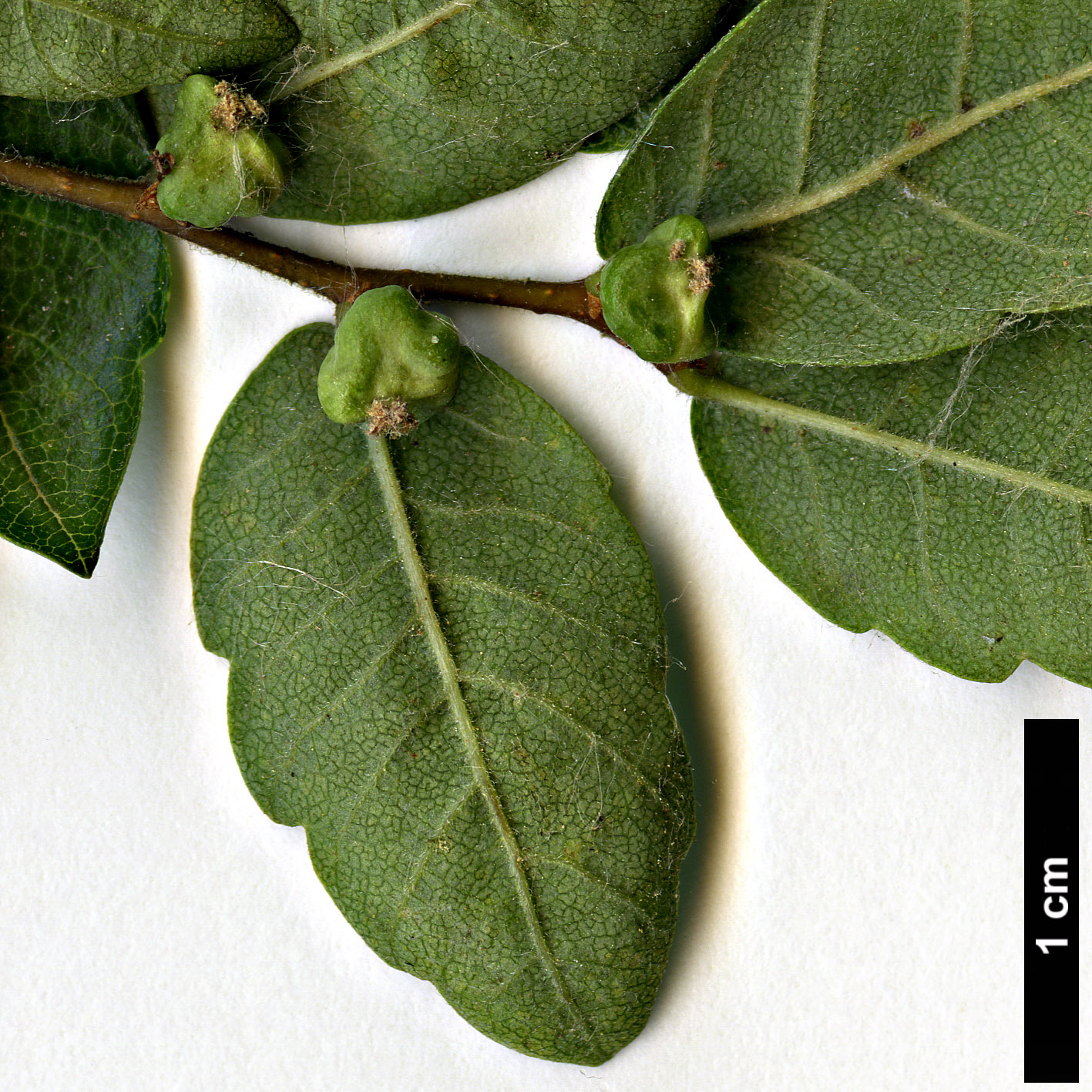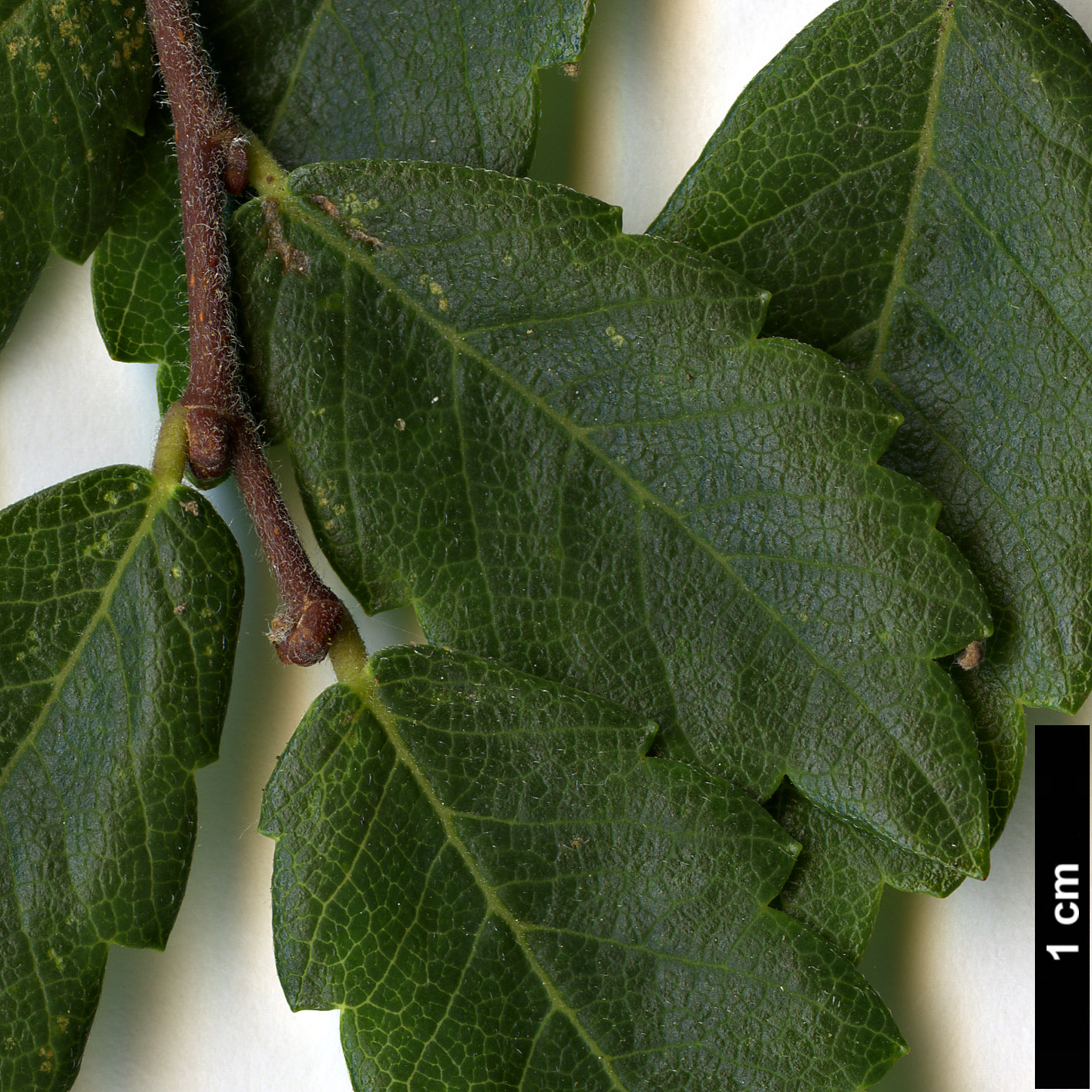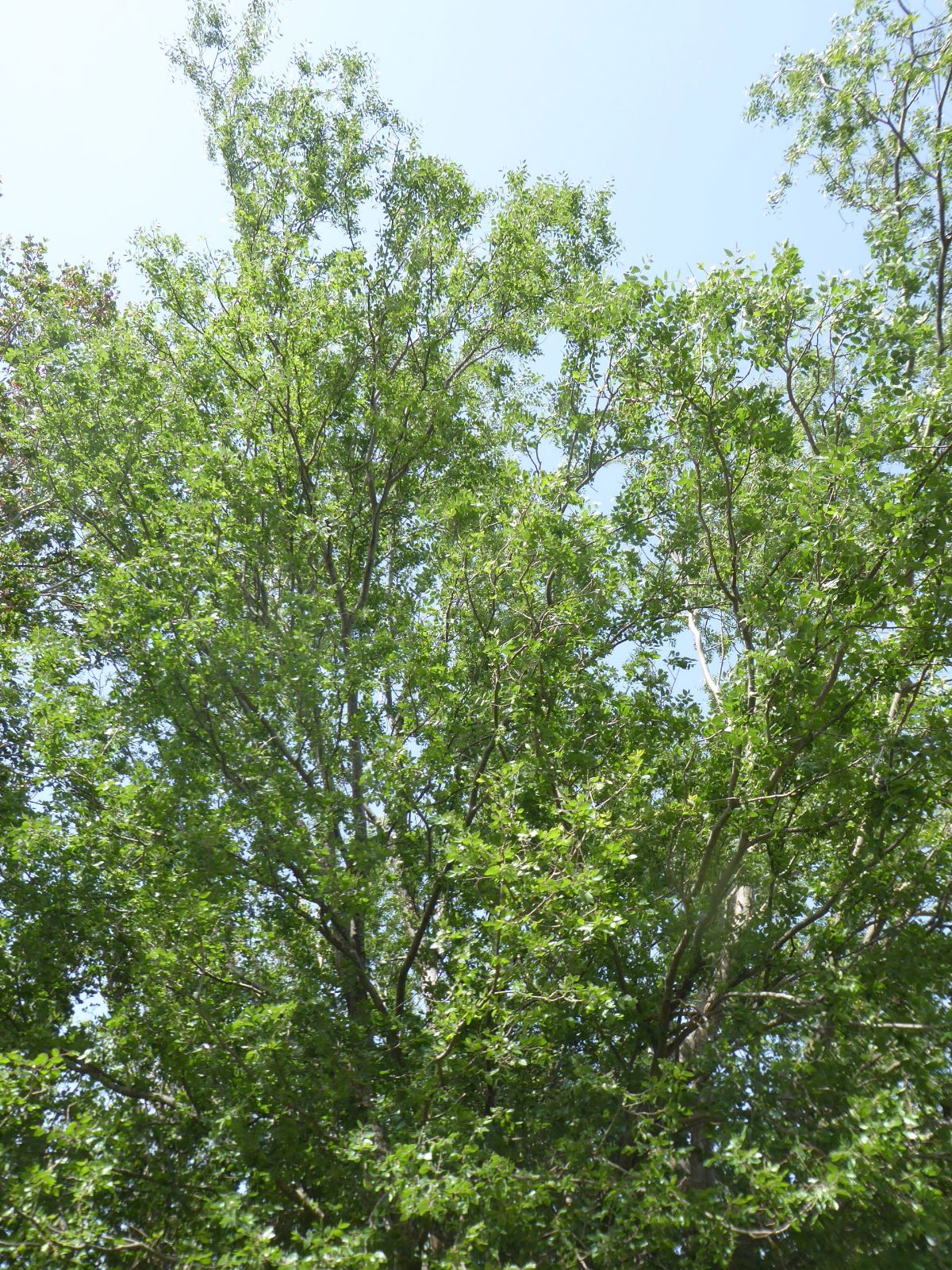Zelkova abelicea
Sponsor
Kindly sponsored by
Francine: 'after many informative Tours and Study Days with the IDS I feel it only fitting to help and promote such a wonderful organisation'
Credits
Owen Johnson (2023)
Recommended citation
Johnson, O. (2023), 'Zelkova abelicea' from the website Trees and Shrubs Online (treesandshrubsonline.
Genus
Common Names
- Cretan Zelkova
- Abelitsia
Synonyms
- Quercus abelicea Lam.
- Ulmus abelicea (Lam.) Sm.
- Planera abelicea (Sm.) Schultes
- Zelkova crenata var. cretica Spach
- Zelkova cretica Spach
- Quercus cretensis Lam. ex Steud.
- Abelicea cretica Sm.
Tree to 15 m, but often stunted due to environmental conditions in the wild and of irregular shape and sometimes multi-stemmed; suckering freely. Bark grey, scaling craggily in age. Young twigs slender, whitish with short dense hairs. Leaves ovate or slightly oblong, 10–25(–40) × 7–20 mm, cordate to rounded at the base and obtuse at the tip, with 3–4(–6) rounded teeth on each side; dark green above with scattered hairs and waxy papillae, whitish-green beneath with short hairs which are dense under the veins; petiole very short. Drupe rounded or 2– or 3-lobed, c. 5 mm long, pubescent. (Bean 1981; Kozlowski & Gratzfeld 2013).
Distribution Greece Crete
Habitat Mountains, 800–1800 m; in open grazed woodland on north-facing slopes and in river gullies.
USDA Hardiness Zone 7
RHS Hardiness Rating H5
Conservation status Endangered (EN)
Like the Sicilian Zelkova sicula, Z. abelicea has found itself marooned in a few mountain refugia in the island of Crete, whose climate is hotter and in particular drier than the general conditions which its genus evolved to exploit. (The nineteenth century Austrian botanist Theodor Kotschy reported similar trees from Cyprus, but this population has never been relocated and contemporary botanists assume that Kotschy was mistaken (Kozlowski & Gratzfeld 2013).) Partial adaptations to the Cretan climate include the tree’s compact stature and its relatively tiny, waxy-surfaced leaves. Also like Z. sicula, this is an endangered species, both because of the tiny scale of its natural range and because anthropogenic climate change seems bound to make the local climate even less suitable in the near future. Unlike Z. sicula, however, populations exist in each of Crete’s mountain ranges, with 42 stands containing as many as a million plants, although many of these have been dwarfed by continual grazing pressure and will have originated as suckers. There is considerable genetic diversity within these populations, suggesting that they may have been isolated from one another for as many as two million years (Kozlowski & Gratzfeld 2013: in some genera of trees, such as Carpinus in the mountains of southern China, such a degree of divergence has traditionally been considered sufficient for separate species to be described.) In another difference from Z. sicula, Z. abelicea has enjoyed or suffered from a long relationship with the local populace, who have coppiced and pollarded the trees for their durable, aromatic timber and for firewood; man-made forest fires and soil erosion pose additional threats. Only the few larger unbrowsed trees seem to flower and fruit successfully, with drupes produced abundantly every few years in coordinated masting events; however, many or most of these drupes tend to be infertile (Kozlowski & Gratzfeld 2013; Kozlowski et al. 2018; abelitsia.gr 2017; Fazan 2018).
To the advantage of this threatened tree are two features characteristic of the genus. Individual plants can be very long-lived, with those miniaturised by browsing reaching at least 500 years. The species also suckers abundantly, and nearly all the reproduction currently observed in Crete seems to be vegetative (Kozlowski & Gratzfeld 2013; Kozlowski et al. 2018). Since 2014, the Abelitsia project has been working to safeguard the future of Zelkova abelicea in Crete (abelitsia.gr 2017) by working with local farmers and by fencing areas against grazing.
Another striking difference from Zelkova sicula (a species which was only discovered and named in 1991) is that Z. abelicea was the first member of its genus to become known to western botanists. Onorio Belli (Honorius Bellus) provided a first-hand description of the ‘Abelicea’ in 1594 in a letter sent from Chania on Crete to Charles de l’Écluse (Clusius) and which was published in Clusius’ Rariorum Plantarum Historia (1601); he also promised to send seed (Bean 1981). Belli’s name for the tree, deriving from the Greek αμπελιτσιά (abelitsia.gr 2017), provided the basis for James Smith’s original description of the zelkova genus as Abelicea in 1808 (Royal Botanic Gardens, Kew 2023); unfortunately, Smith’s work remained little known and Édouard Spach’s Georgian-derived name Zelkova from 1841 has instead been conserved.
We now know that any seeds Belli may have sent in 1594 are quite unlikely to be have proved fertile, and there is certainly no evidence for the ex situ cultivation of Zelkova abelicea until the twentieth century. Jean-Baptiste Lamarck, providing the first modern description of the species in 1785, concluded that it was an oak (Royal Botanic Gardens, Kew 2023) – a bizarre assumption and one that would have surely been impossible if Lamarck had had living material to study in France. The species eventually reached England in 1929, when the amateur botanist and mountaineer George Baker and a retired Cretan policeman, Marco Bonakis, got around the fertility issues by digging up young plants in the Lefka Ori mountains and despatching them within hours by flying boat (MacGregor 2018; the 1924 date for the species’ cultivation, cited in the Hillier Manual of Trees and Shrubs (Edwards & Marshall 2019), probably derives from a misprint). One of Baker and Bonakis’ plants still survived within the generic collection at Kew in 2022, where it is has made a rather untidy multi-stemmed tree 11 m tall (Tree Register 2023). Genetic evidence suggests that most if not all of the rather few examples in cultivation seem to derive from the Lefka Ori stands, both because these represent the most accessible population and because existing introductions are likely to have been propagated vegetatively; this means that only a small part of the species’ diversity is represented as yet in ex situ collections (BGCI 2010; Kozlowski & Gratzfeld 2013).
The dimensions of the tree at Kew, after nearly a century, should remind potential growers that, while its rarity makes Zelkova abelicea a fascinating plant to grow, it cannot be expected to rival the grace and stature of Z. carpinifolia or Z. serrata even when liberated from the hot, dry prison in which it finds itself in the wild. In England it is tough enough to thrive in the cooler, cloudier conditions of the Yorkshire Arboretum, where a specimen planted in 1979 is 6 m tall. At Dyffryn Gardens in the wetter climate of Wales, a tree was dying back badly in 2009, perhaps due to Elm Disease (Tree Register 2023). At Arboretum Kalmthout in Belgium the species was 7 m tall in 2018 (Edwards & Marshall 2019), and it is also grown at Eastwoodhill Arboretum in New Zealand (Auckland Museum 2023). However, Zelkova abelicea may still await introduction to North America, and the limits of its winter hardiness are certainly guess-work. In the UK, young plants of unrecorded provenance are now commercially available (Royal Horticultural Society 2023; Bluebell Arboretum and Nursery 2023).

